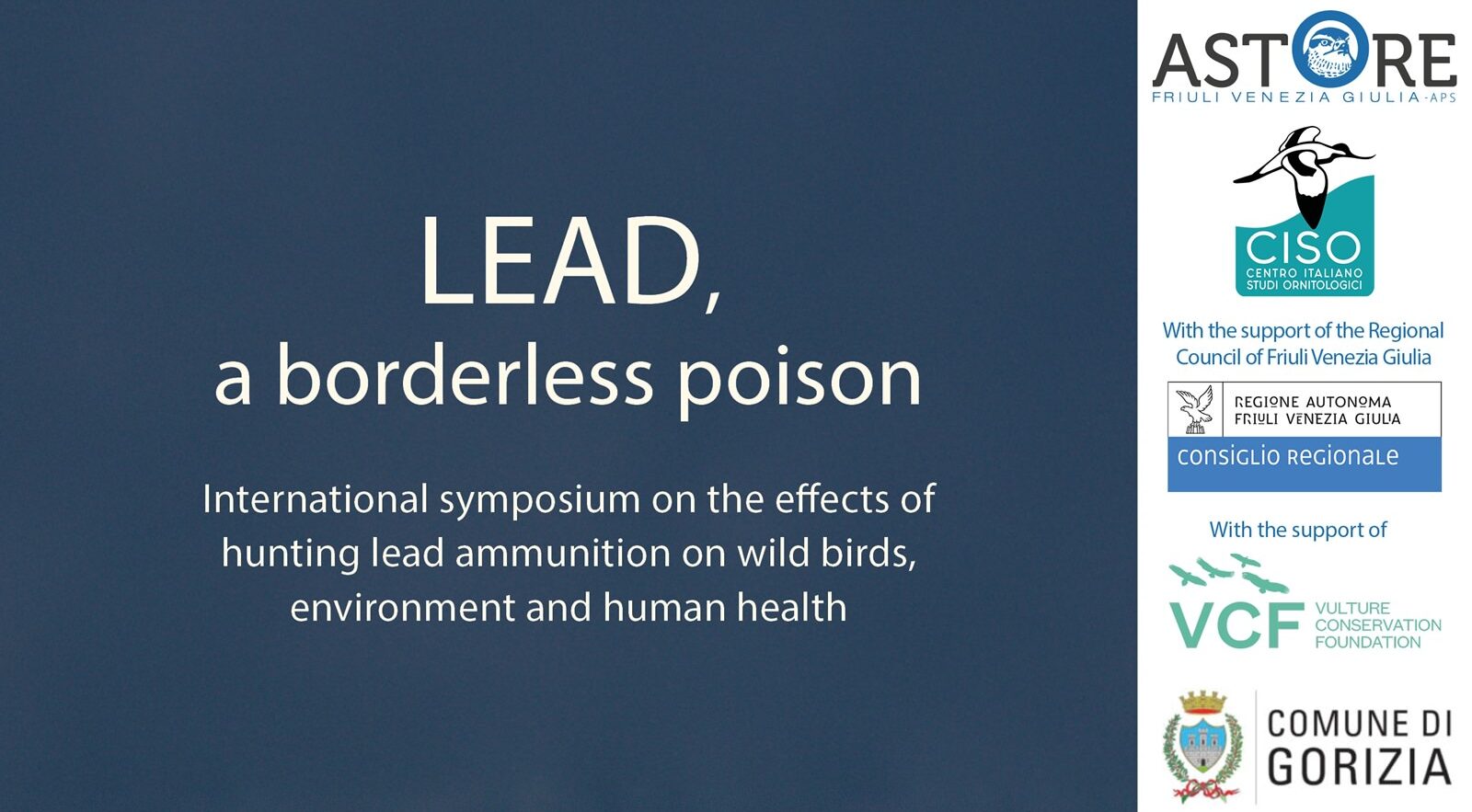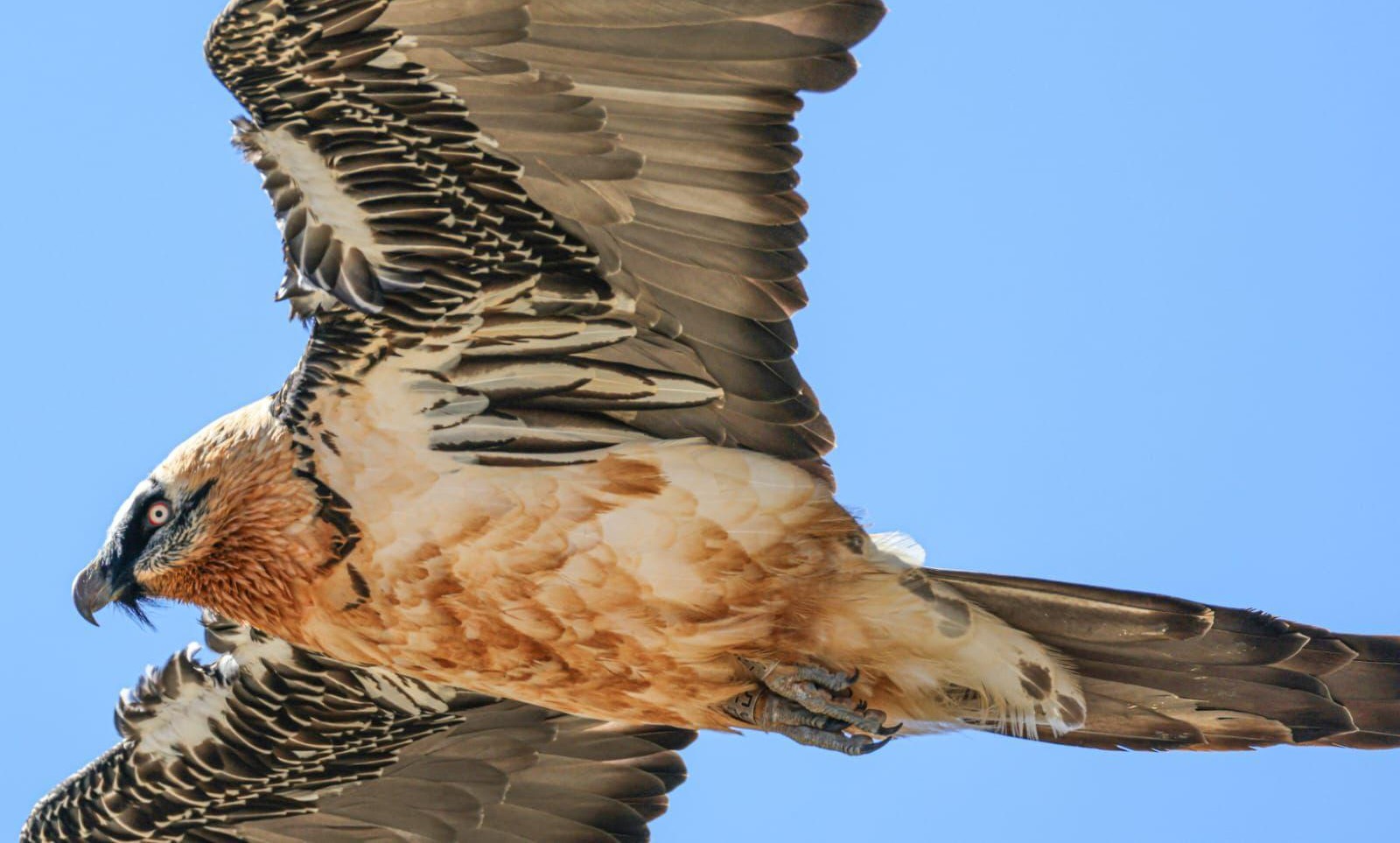A three-day technical meeting was recently held in Alghero, Sardinia (Italy), to help define reintroduction and conservation strategies of the Bearded and Cinereous Vulture in the island. About 15 vulture experts from all over Europe participated in the meeting, organised by the Vulture Conservation Foundation (VCF) and the LIFE Safe for Vultures project, to evaluate the feasibility study for the reintroduction of those two species, produced by the project team.
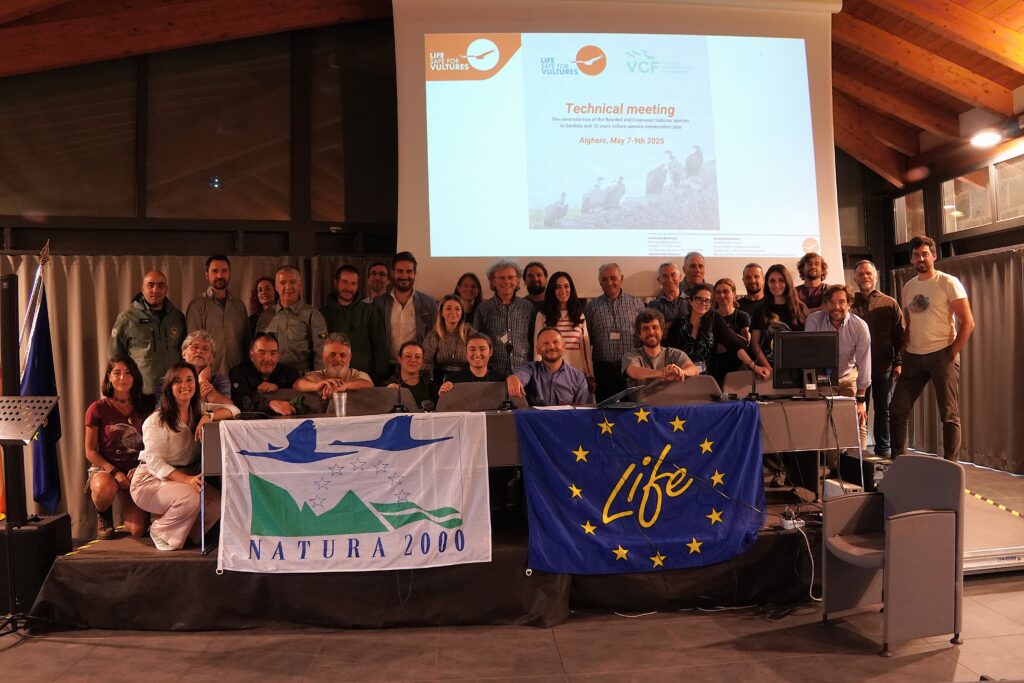
The LIFE Safe for Vultures project accomplished another key milestone for vulture conservation in Sardinia. The project produced and presented the draft feasibility study for the reintroduction of the Bearded e Cinereous vultures (Gypaetus barbatus e Aegypius monachus) in Sardinia. The study was thoroughly evaluated and discussed in the meeting.
The three days of discussion included technical workshops and presentations on the current knowledge on the species on the island, field visits to possible reintroduction sites, and working groups sessions to evaluate the impact and scope of existing threats and priority actions. Experts from all over Europe, together with local and national institutional representatives, addressed crucial issues such as mortality risk mitigation (by electrocution, poisoning, or collisions with wind turbines), and food and habitat availability. They also discussed reintroduction and monitoring protocols for the different vulture species. At the end of the meeting, the team presented the consultation results with the intention of working on a 10-year island wide conservation plan for vultures species.
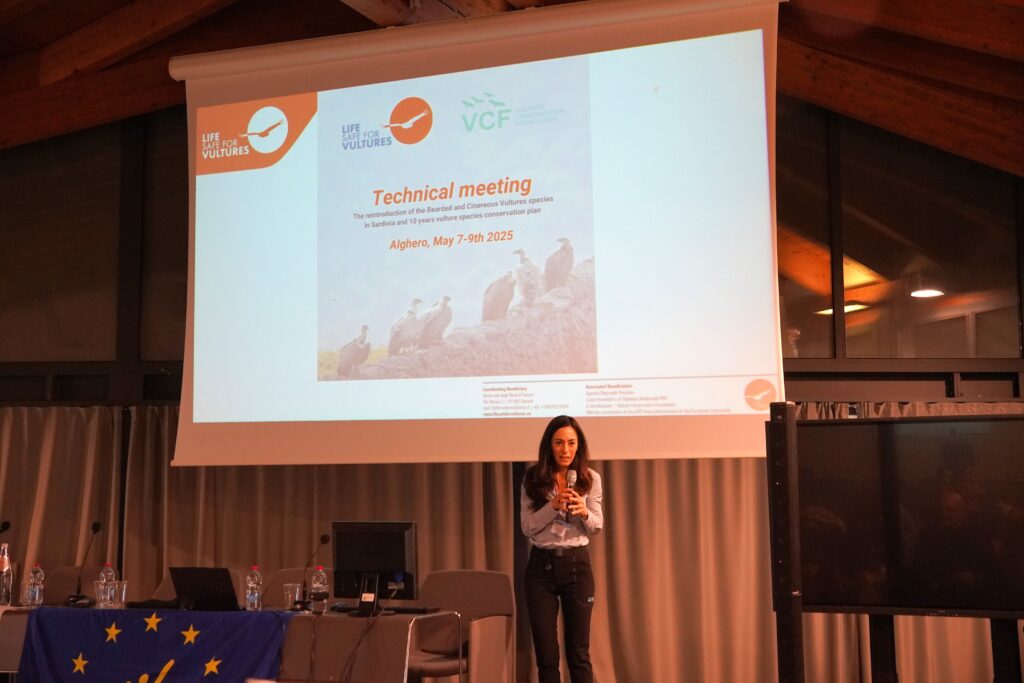
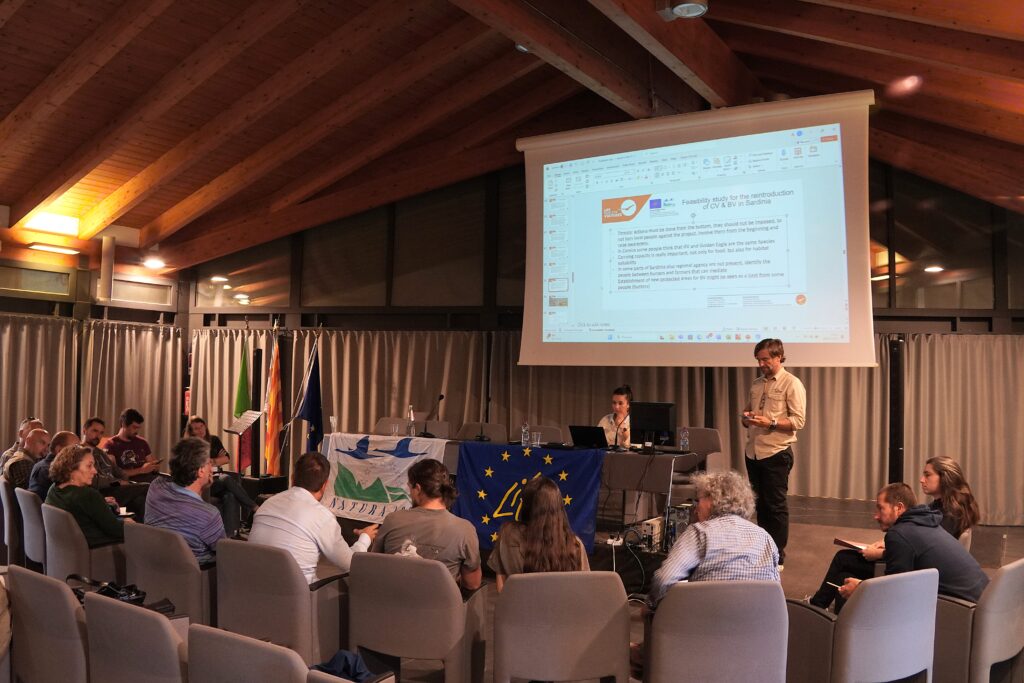
The history of vultures in Sardinia
At the beginning of the 20th century, Sardinia hosted thriving populations of Bearded, Cinereous, and Griffon Vultures (Gypaetus barbatus, Aegypius monachus e Gyps fulvus), with estimated populations of over 1,500 Griffons, 150 Cinereous vulture pairs, and 35 Bearded vulture pairs. However, by the late 1960s, the Bearded and Cinereous Vultures were extinct on the island due to threats like poaching, poisoning, and habitat loss. The Griffon Vulture did not disappear, but its numbers still suffered, with only about 70-100 individuals remaining by the early 2000s.
Recent conservation efforts, notably the LIFE Under Griffon Wings and LIFE Safe for Vultures projects, have facilitated a revival of the Griffon Vulture. The two projects worked on dedicated conservation and monitoring measures, reintroductions, and relentless threat mitigation actions. Thanks to their efforts, the 2023 census recorded between 332 and 378 individuals, marking an 11.8% increase from the previous year. In addition, the reintroduction initiatives have expanded from northern Sardinia to the south, including the release of 21 vultures from Spain in 2024, and a new release planned for late spring 2025.
Lastly, a Egyptian Vulture (Neophron percnopterus) pair has successfully nested on the island since 2019, representing a rare natural colonisation – the species was not know to breed in Sardiania, and was only present on migration in very small numbers. .
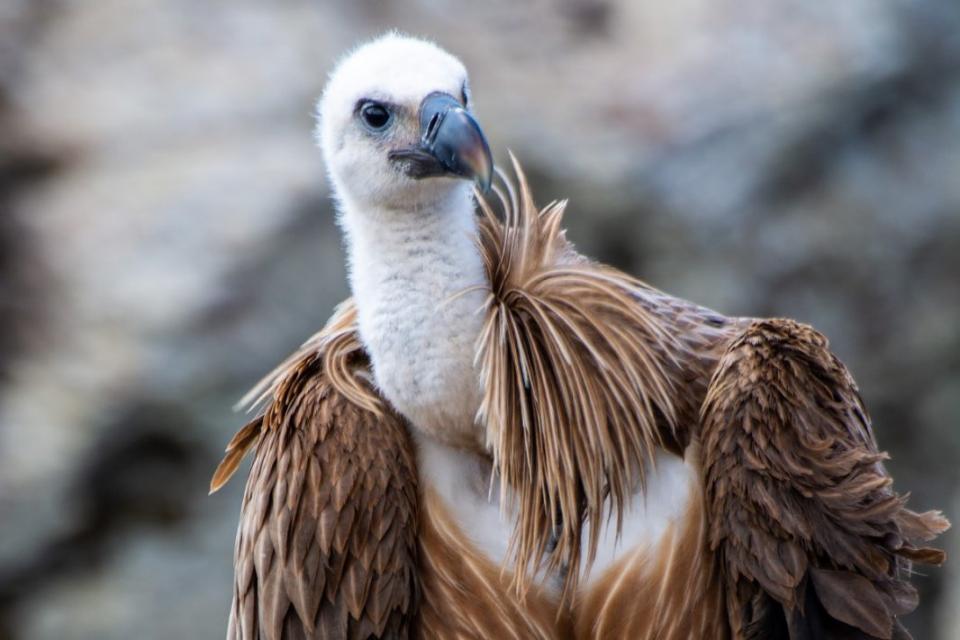



Discussing the next chapter
The meeting in Alghero started with the presentation of the feasibility study produced for the reintroduction of the two extinct vulture species by the LIFE Safe for Vultures project. According to the study, Sardinia today has suitable ecological conditions for the reintroduction of Bearded e Cinereous Vultures (Gypaetus barbatus e Aegypius monachus). Management and social conditions are also promising.
During the first day, the experts also visited some possible reintroduction sites. Cinereous e Bearded vultures have different ecological requirements; therefore, the reintroduction areas and strategies must be tailored to their needs.
The second day was dedicated to workshops. The attendees were divided into two groups, each discussing the reintroduction plans for one of the two target species, and two of the four main threats: poisoning, food availability, electrocution and collision.
The third day was dedicated to integrating the groups work and planning the 10-year island wide conservation plan for vultures species.
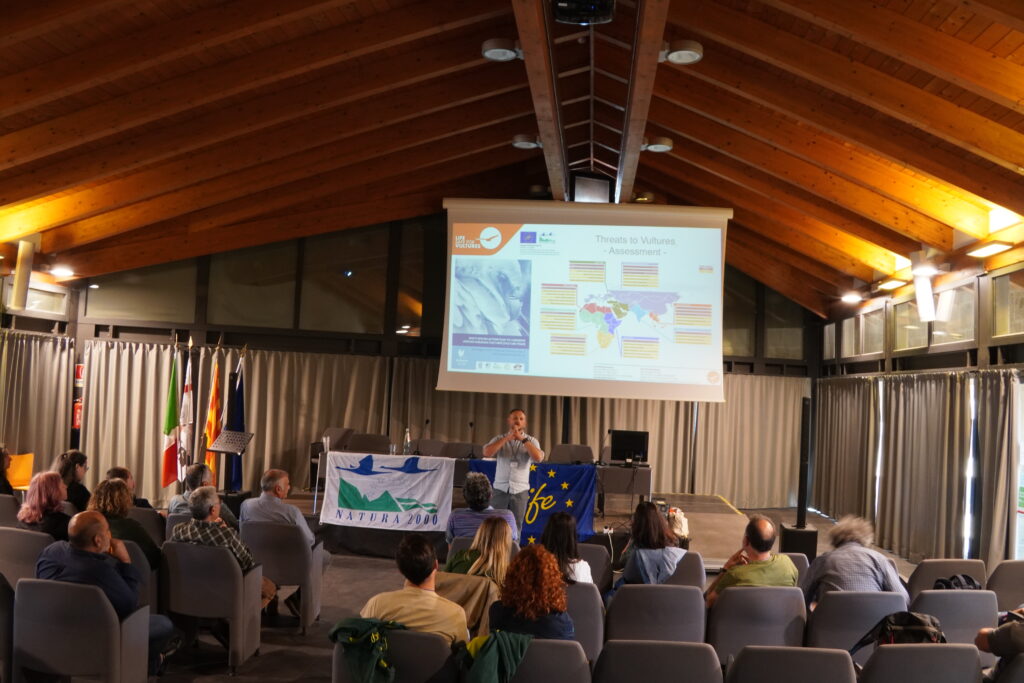
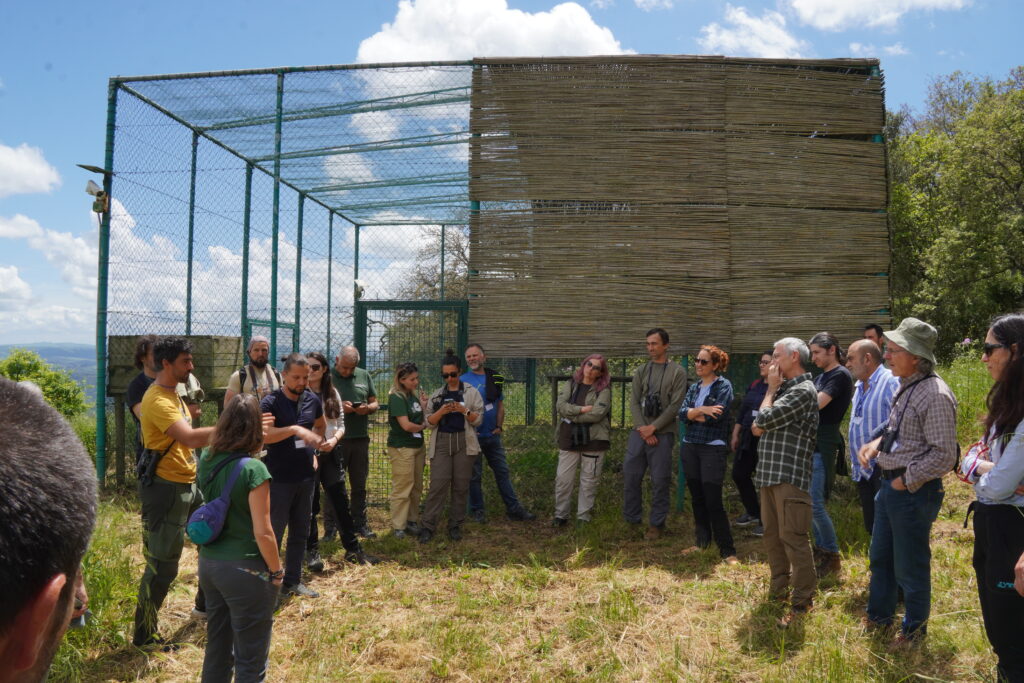
A common goal: restore vultures populations in Sardinia and in Europe
The experts concluded that this is a favourable moment for reintroducing Bearded e Cinereous Vultures (Gypaetus barbatus e Aegypius monachus) in Sardinia. The ecological and social conditions are indeed positive. The extensive livestock farming traditional in Sardinia, guarantee adequate food availability for vultures of all species on the island. In addition, the LIFE project and its partners, made impressive progress in reducing wildlife poisoning on the island through dedicated anti-poisoning actions. Currently electrocution seems to be the main threat for raptors in Sardinia. Overall, threats levels seem to be low and under control, and there is plenty of food. Further, there is currently capacity and political will to continue successful vulture conservation projects. Lastly, the reintroduction of the Bearded Vulture in Sardinia would complement the conservation efforts going on with this species in neighbouring Corsica, providing needed ecological space for the small Corsica-Sardinia ancient population.
A positive overview does not mean that everything is set. On the contrary, the first step to ensure the success of the Bearded e Cinereous Vultures reintroduction, is continuing the excellent work done by the LIFE Safe for Vultures protecting and monitoring Griffon Vultures (Gyps fulvus). The efforts required for a successful Bearded and Cinereous Vultures reintroduction are island-wide and need the collaboration of scientists, institutions and local communities.
The first step is now successfully completed, and the road to a wilder Sardinia has been traced. We will continue supporting Sardinian conservationists in their work, with the ultimate aim to restore the complete vulture guild on the island. Sardinia could then be a best practice example for other regions in our continent.
